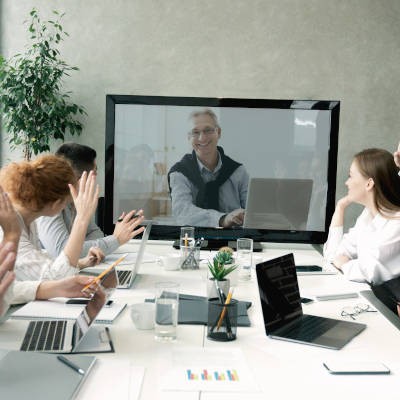The Connection, Inc Blog
Productivity improves as time management improves. It seems like a simple notion, but if you aren’t deliberate about managing your time, there isn’t much positive movement that is going to be had in the productivity meter. This month, we thought we would help you by giving you a few strategies that will work to improve your employees’ productivity.
Meetings: they’re known in the business world as a necessary evil. However, this doesn’t have to be the case. With a few adjustments, you can create the ideal conditions for effective and efficient meetings.
One sure way to make a meeting unbearable is to go in without a plan, as the general disorganization will essentially waste everybody’s time. In fact, the first thing that a meeting will need to be successful is an agenda to outline the points the meeting will touch upon.
The agenda also has the added benefit of allowing you to establish if a meeting is even necessary. After all, if the meeting is meant to focus on one or two points that only apply to one or two people, it serves the business much better if the meeting is cancelled--as this allows for the majority of would--be attendees to spend their time more productively than if they were to sit in a meeting with that didn’t really apply to them.
As you establish your reason for meeting, you also establish the point to stay focused on as your meeting takes place. What purpose does your meeting have? What is the end goal? Are you meeting to establish an initiative’s timeframe? Are you resolving an issue? Are you brainstorming your next project? Cementing the meeting’s core purpose will assist in maintaining your focus for the duration of the meeting. Other effective tactics for building focus include discouraging the use of devices as a meeting is in session, and conducting a meeting in which all attendees are on their feet.
Of course, there are ways that you personally can make a meeting more engaging if you ever find yourself at the helm. Whenever it’s appropriate, try sprinkling some humor into your presentation to keep your audience’s attention. However, use this tool sparingly, as it can easily become a detriment to accomplishing anything within your session.
Be cautious of rambling and going off subject. Eliminating extra words and being sure to avoid hesitant sounds like “um,” "uh,” and “well,” will not only help your audience listen to what you're saying, but it will make you seem more confident. Practicing what you plan to say ahead of time will help with this, as well as help you better prepare for the real deal.
Perhaps most importantly, you need to remember to be yourself. Nothing will make a meeting drag on more than an insincere delivery of industry jargon. Speak as though you normally would, and don’t be afraid to poke fun at yourself, as this will make you a more engaging and approachable speaker.
What are some of your worst experiences with meetings? Let us know in the comments!
It wasn’t too long ago when the idea of video conferencing was a very complicated one. The technology just wasn’t there to make it a major benefit for companies. As conferencing technology has been innovated upon, however, it now presents a laundry list of substantial benefits. Let’s take a look at some benefits you can see by moving to video-driven meetings.
Businesses are always looking for a way to boost productivity. Some businesses will try almost anything to do so. For the individual, however, managing your productivity is a little less complicated. That’s not to say that it is always simple. Typically, the best way to improve productivity is to improve time management. How does one go about changing their behaviors to improve their productivity? Let’s take a look at a couple of ways.
Many small and midsize companies are forced into spreading their resources out in order to compete with larger organizations. For those that are searching for a way to manage all the moving parts of business, having the means to communicate has to be at the top of the list. What makes it more difficult are that many organizations have a reliance on workers that work remotely. For times like this, a comprehensive conferencing strategy is important. We’ll take a look at what makes up today’s powerful conferencing solutions, and how you can use them to find more success.






